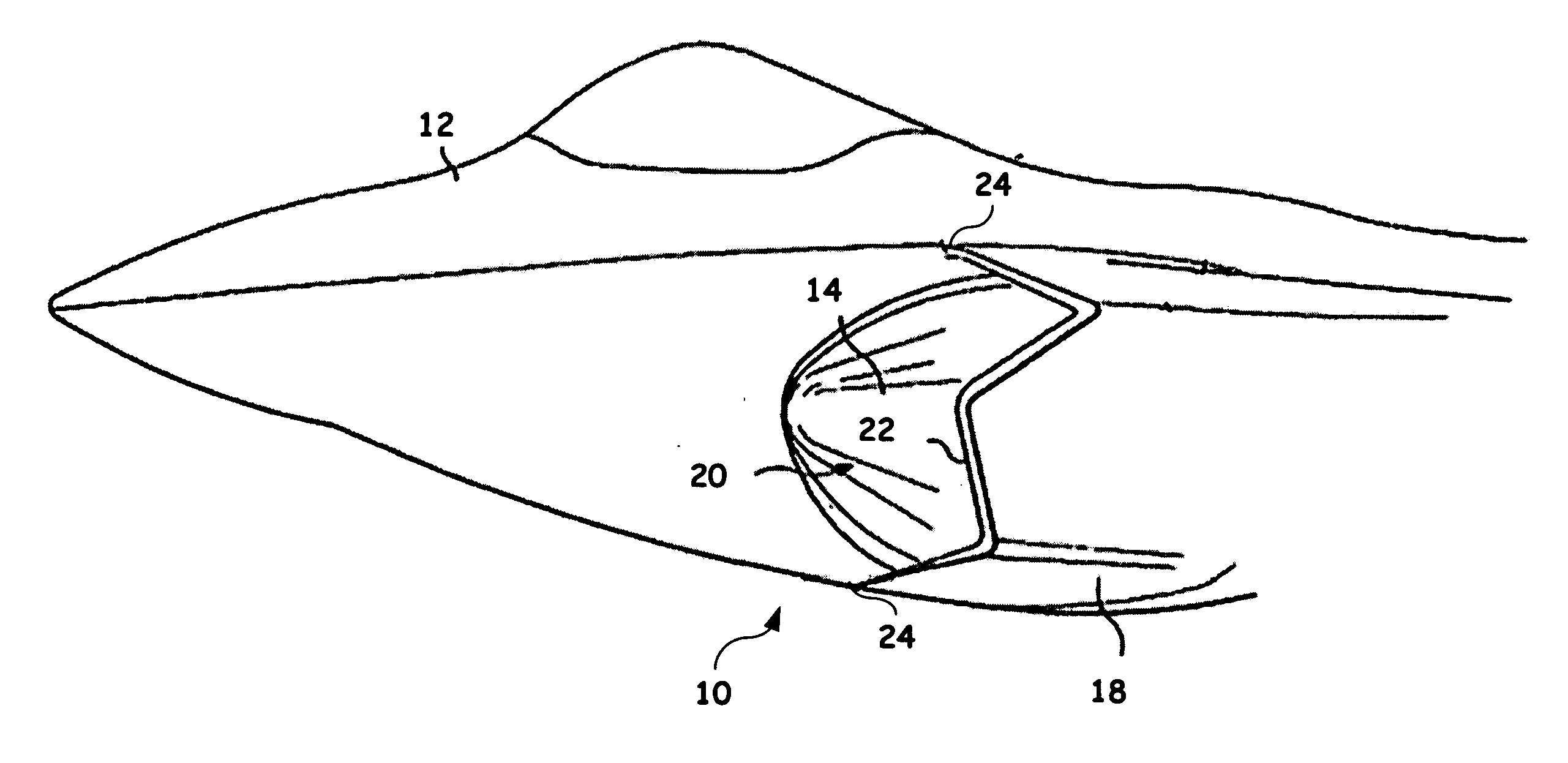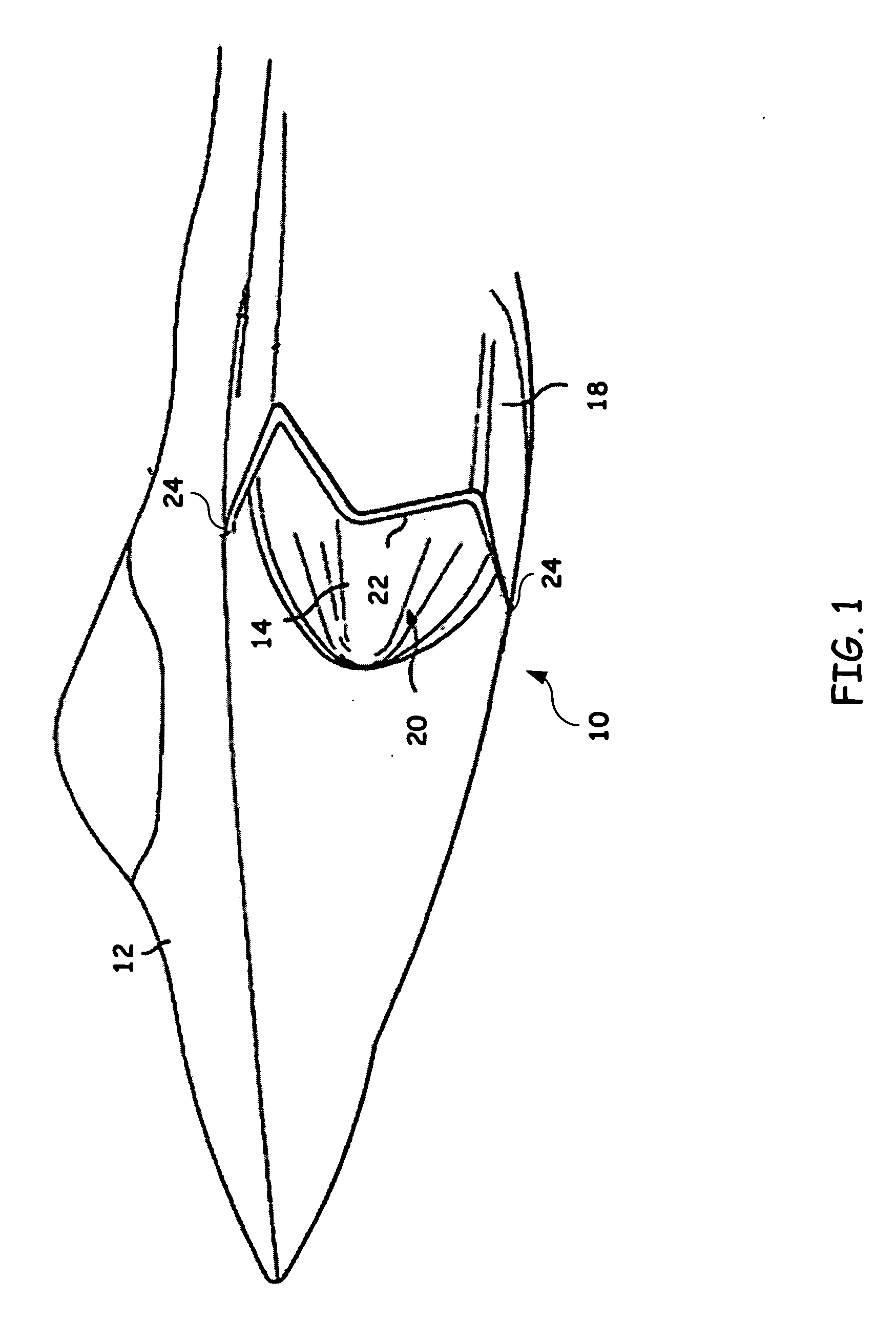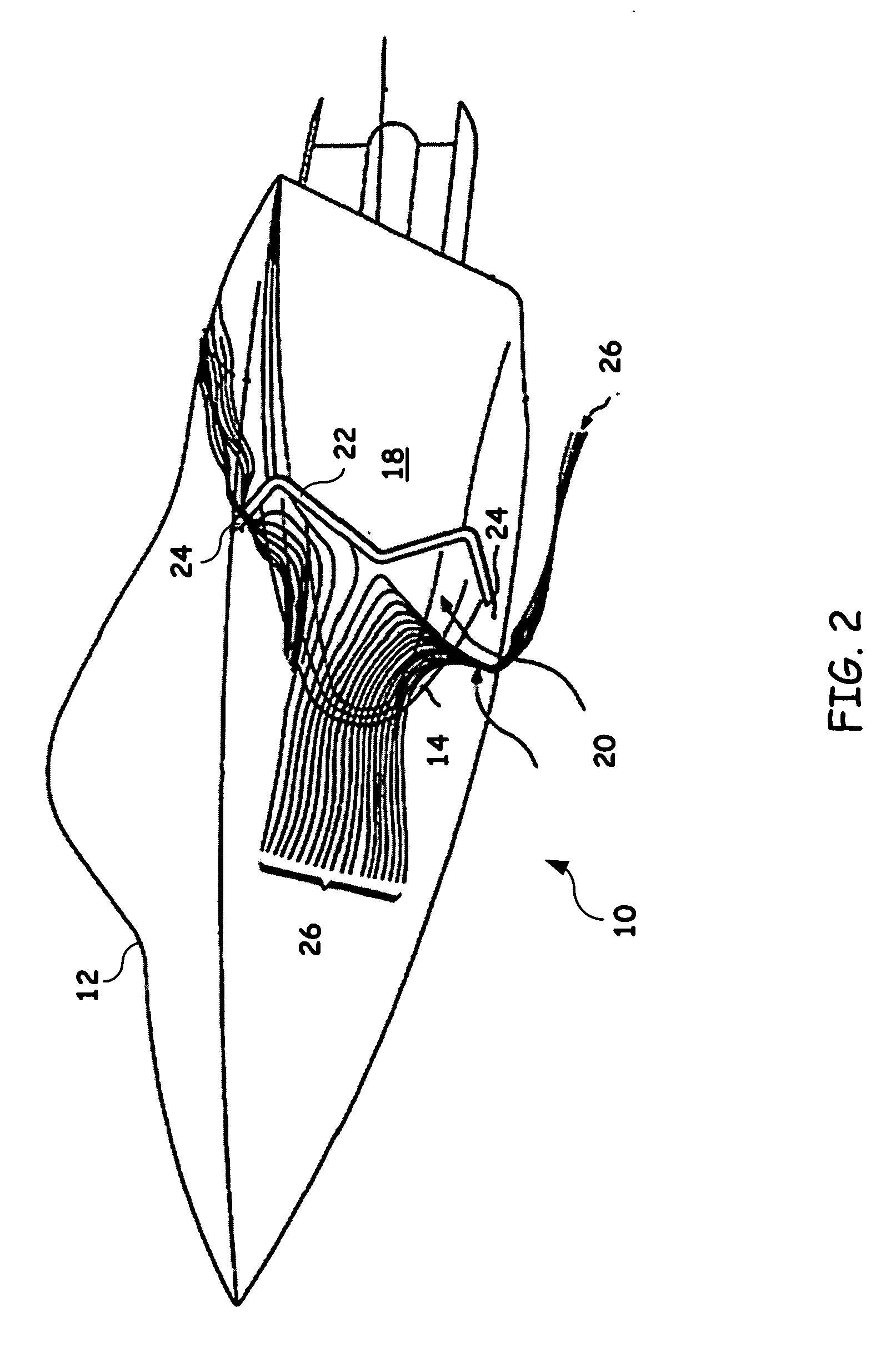Method for streamline traced external compression inlet
a compression inlet and traced technology, applied in the direction of machines/engines, air-flow influencers, rotors, etc., can solve the problems of poor engine performance, increased weight, increased mechanical complexity and maintenance costs of aircraft, and increased weight of aircraft, so as to reduce cowl drag, the effect of easy prediction of performance and desired internal flow field and inlet performan
- Summary
- Abstract
- Description
- Claims
- Application Information
AI Technical Summary
Benefits of technology
Problems solved by technology
Method used
Image
Examples
Embodiment Construction
[0026] Preferred embodiments of the present invention are illustrated in the FIGs., like numerals being used to refer to like and corresponding parts of the various drawings.
[0027] Historic external compression air induction systems for gas turbine powered supersonic aircraft do not meet the current needs for inlet / airframe integration. These needs are driven by factors such as tailored aperture shapes, drag minimization, and propulsion performance. Embodiments of the present invention provide a method to create a Streamline Traced External Compression Inlet (STECI) that substantially addresses Inlet / Airframe integration issues. This method results in fewer design iterations than traditional historic external compression inlets.
[0028] Historical supersonic external compression inlets are based on simple 2D ramp or Axisymmetric configurations, or have been designed using Caret shaping or Diverterless Supersonic Inlet methodologies. None of these historical configurations or methods...
PUM
 Login to View More
Login to View More Abstract
Description
Claims
Application Information
 Login to View More
Login to View More - R&D
- Intellectual Property
- Life Sciences
- Materials
- Tech Scout
- Unparalleled Data Quality
- Higher Quality Content
- 60% Fewer Hallucinations
Browse by: Latest US Patents, China's latest patents, Technical Efficacy Thesaurus, Application Domain, Technology Topic, Popular Technical Reports.
© 2025 PatSnap. All rights reserved.Legal|Privacy policy|Modern Slavery Act Transparency Statement|Sitemap|About US| Contact US: help@patsnap.com



